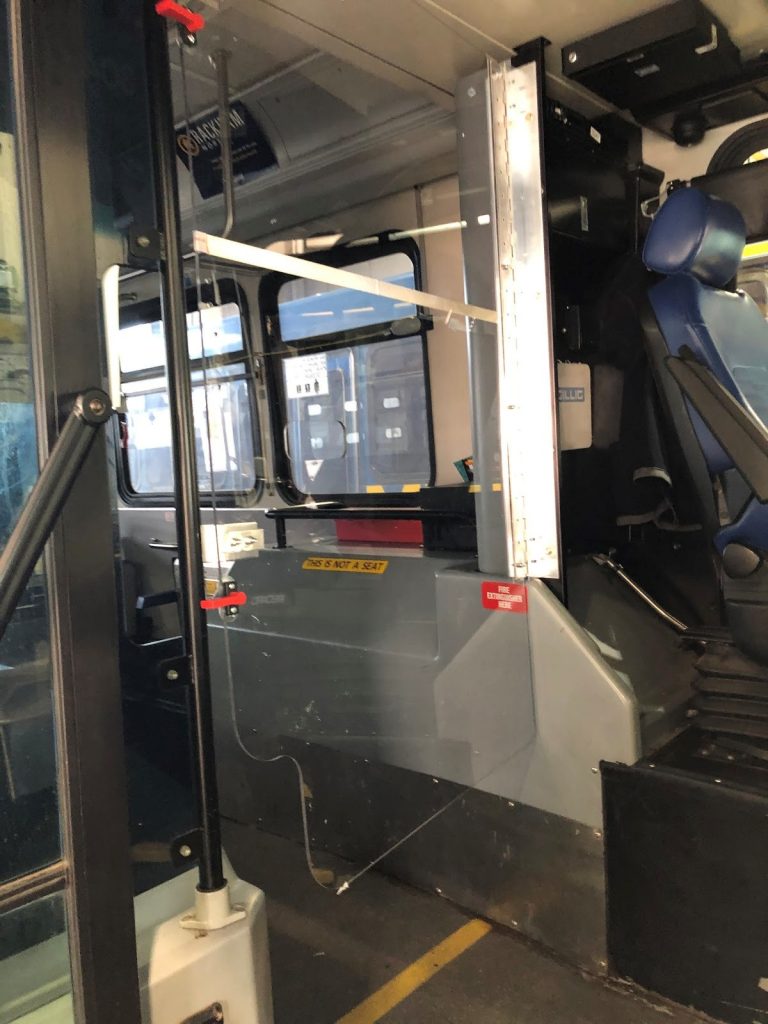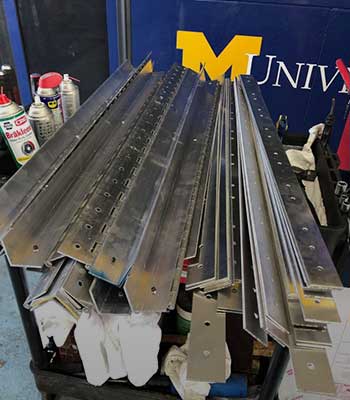Adjusting operations to promote health and safety
When the university moved to online classes, the stay-at-home order went into effect, and Michigan Medicine canceled elective procedures, U-M bus ridership dropped by about 85%.
Still, many people relied upon the bus. On March 18, with Washtenaw County COVID-19 cases near a dozen and parking capacity available, the university paused parking permit enforcement on most of campus to further reduce the need to ride buses.
As ridership levels were dropping to approximately 5% of normal levels, the reduction in overall bus operations allowed double the number of buses to operate during peak Michigan Medicine travel times to enable people to maintain their social distance. Buses began loading from the back door and a new visual indicator was established to maintain separation between drivers and passengers. In addition, buses are thoroughly disinfected every night, hand sanitizer is provided to drivers, and drivers were provided the option to wear masks shortly before the CDC recommended a cloth face cover for general use to protect healthy people.

Bus partitions
Still, Logistics, Transportation and Parking (LTP) wanted to do more to protect staff and customers. Inspired by clear plastic shields used to protect cashiers at many stores, LTP reached out to Architecture, Engineering and Construction (AEC) about designing something similar to reduce the spread of respiratory droplets between bus operators and passengers. Less than two weeks later, partitions are installed on all 47 U-M buses currently operating!
Teams in four F&O departments collaborated to make this remarkable project happen. First, LTP, AEC, and Environment, Health and Safety discussed the goals and constraints. Any partition would need to separate drivers and passengers while maintaining accessibility for riders who need to enter the front door. Thus, it would need to be a hinged door.
Sign Shop designer Matt Wilson was engaged to take the lead on generating a solution. After taking measurements, Matt drafted a design and fabricated a prototype. Garage Services staff installed it and Transit Services inspected and approved the design.
With a plan in place, teams quickly obtained or manufactured the supplies. Architectural Trades Shops and Material Services coordinated to order laser-cut door panels and raw hardware for attaching the doors. Material Services facilitated delivery and receiving. The Metal Shops—part of Maintenance Auxiliaries and Central Shops—fabricated hinges, mounting brackets, and handles to hold the panels together and fasten them to the bus.
The door panels came available on a Monday at 4:00 pm, and instead of waiting for them to be delivered on Tuesday, Garage Services staff picked them up to get a jump on installations.

That night, Garage Services, Metal Shops staff, and Matt installed the first seven partitions. At first, progress was slow. They found that some aspects of the design weren’t working out quite as well as hoped, and that not all the buses are identical. Also, trying to maintain social distancing added a new layer of complexity. But after some field modifications, they had a system down and subsequent installations were faster.
“These bus barriers have been very well received by our drivers and it is truly amazing that this went from idea to installation on 47 buses in a little more than one week’s time,” said Bill McAllister, manager of Transportation and Waste Management Services.
In fact, U-M was already in the process of installing panels when the CDC updated its transit operator recommendations to include partitions or other measures to physically separate drivers and passengers.
After the first few days of use, Garage Services made minor modifications to improve upon the design based on feedback from bus drivers. The modifications reduce glare at night and use bolts that are more resistant to loosening on bumpy roads.
Transferable solutions help the community
During a crisis, it’s especially valuable for U-M to leverage its expertise to help the community. Matt proactively reached out to AAATA (TheRide) and learned “There is not one barrier on the market and they were in desperate need of a solution.” He shared the design file and other info so they could fabricate and install their own partitions. When he learned that the Detroit Department of Transportation was also looking for a solution, he sent them the info as well.
TheRide has since installed partitions on 40 buses and DDOT is pursuing installation on over 200 buses using an improved design based on U-M’s first round of installations. Matt said, “I am very proud that our unit was not only able to work at keeping our coworkers and employees safer, but we are now able to assist other transit authorities by sharing the plans to keep their own drivers safe!”
With collaboration across teams and dedication to the mission, F&O staff have risen to the challenge of providing reliable service to the university throughout the COVID-19 pandemic.

